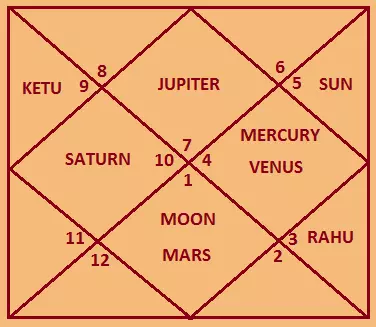Gandmool Dosha in Indian Vedic Astrology or Jyotish

Gandmool Dosha in Jyotish or Indian Vedic Astrology
Know about Gandmool Dosha in Indian Vedic Astrology or Jyotish
Gandmool Dosha is an astrological condition in Vedic Astrology that arises when a person is born under specific Nakshatras (constellations) that are considered sensitive or inauspicious. This Dosha is particularly relevant in the case of a newborn child and is believed to impact various aspects of life including health, longevity, and family relationships.
What is Gandmool Dosha?
Gandmool Dosha is formed when a child is born in any of the following six Nakshatras:
- Ashwini
- Ashlesha
- Magha
- Jyeshtha
- Moola
- Revati
These Nakshatras fall under the junction (Gandanta) zones between water and fire signs or between different zodiac elements, and hence are considered astrologically sensitive.
Types of Gandmool Dosha
There are two types of Gandmool Dosha:
- Partial Gandmool: When a person is born in only one Gandmool Nakshatra.
- Complete Gandmool: When both the Moon Nakshatra and Lagna Nakshatra fall in Gandmool Nakshatras.
Effects of Gandmool Dosha
The effects of Gandmool Dosha vary depending on the Nakshatra and its Charan (quarter). Commonly believed effects include:
- Health issues in early childhood
- Strained relationships with parents or siblings
- Obstacles in education or career
- Unexplained challenges in family life
Remedies for Gandmool Dosha
Vedic Astrology recommends specific remedies to nullify or reduce the ill effects of Gandmool Dosha:
- Gandmool Shanti Puja – A ritual performed on the 27th day after the child’s birth
- Offerings to the deity ruling the Nakshatra
- Recitation of specific mantras or hymns
- Donation of food, clothes, and essentials to Brahmins
It is important that these remedies are conducted under the guidance of a knowledgeable astrologer and priest.
Importance of Expert Guidance
Not all children born in these Nakshatras are negatively affected. The intensity of Gandmool Dosha depends on various factors such as planetary aspects, position of the Moon, and strength of the Lagna. An experienced astrologer like Dr. A.S. Kalra can analyze the complete birth chart and suggest accurate remedies if necessary.
Conclusion
Gandmool Dosha is an age-old astrological belief that requires a careful and nuanced analysis. With proper rituals and astrological advice, its negative effects can be minimized or completely neutralized. Early consultation and timely remedies are key to ensuring a balanced life for the child and family.

Address: -Dr.A.S.Kalra Astrologer307, 3rd Floor, Tower-2 JM Park Sapphire Ramprastha Greens Sector-7, Vaishali Delhi NCR India |
Mobile/WhatsApp: -+91-8006959091 |
Email ID: -astro.kalra@gmail.com |
Web: -https://astrologer-astrology.com |

